Introduction
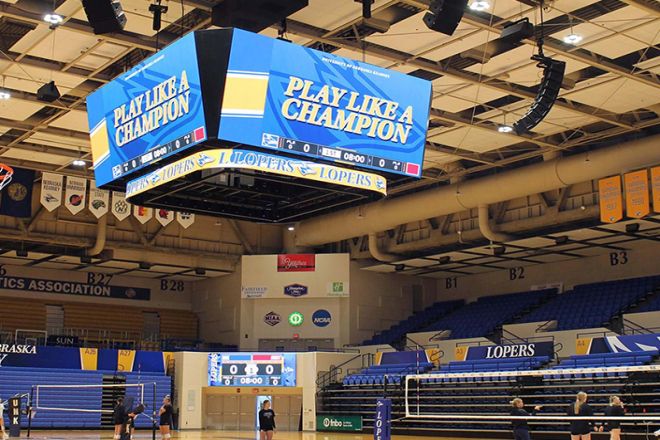
Today, with the vigorous development of digital media, LED score screens, which are important facilities in modern stadiums, conference rooms, and various exhibitions, are increasingly used.
With its advantages of high definition, large viewing angle, and high refresh rate, LED score screens not only provide audiences with an excellent visual experience but also bring abundant revenue-generating opportunities to enterprises and venue operators.
This article will delve into how to generate income through LED score screens and provide you with a useful reference.
1. What are the potential revenue streams for LED score screens in stadiums?

The potential revenue sources of LED score screens in sports venues are diverse. These revenue sources not only contribute to the daily operation and maintenance of the venues but also further promote the development of the sports industry. The following are the main potential revenue sources for LED score screens in sports venues:
- Advertising revenue:
The high exposure and visual appeal of LED scoring screens make them ideal for advertisers to place ads. Sports venues can generate significant advertising revenue by selling advertising space or time slots.
These advertisements can include brand promotion, product promotion, event sponsorship, etc., which can not only bring advertisers brand exposure and increase market share but also bring a stable income stream to sports venues.
- Sponsorship income:
Sponsors of sports events are often willing to display their brands or products on LED score screens to expand brand influence and enhance market awareness.
Sports venues can sign cooperation agreements with sponsors and display the sponsor’s brand image through LED scoring screens to obtain sponsorship revenue.
- Income from event broadcast rights:
With the popularity of sports events and the increase in audience demand, event broadcast rights have become one of the important sources of income for sports venues.
As an important element of event broadcasting, broadcast agencies often include the LED score screen’s display content in the live event screen. Therefore, sports venues can obtain additional income by selling the broadcast rights of LED score screens.
- Rental income:
The flexibility and portability of LED score screens allow them to be used in different sporting events and activities. In addition to being fixedly installed in stadiums, LED score screens can also be rented out for other activities or events, such as concerts, exhibitions, commercial activities, etc.
Through rental services, sports venues can further expand the scope of use of LED scoring screens and increase revenue sources.
- Value-added service income:
Sports venues can also use LED scoring screens to provide value-added services, such as real-time data statistics, event information push, interactive games, etc. These value-added services can enhance spectators’ viewing experience while also bringing new revenue sources to sports venues.
2. What types of content are most effective at engaging viewers on LED scoring screens?
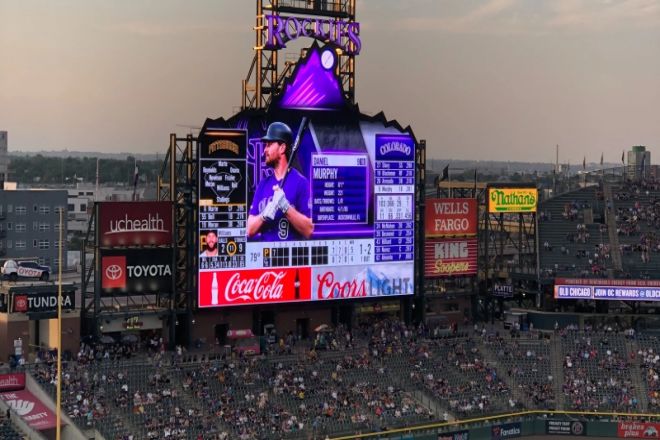
As an important facility in sports venues, LED scoring screens play a key role in attracting spectators and improving the viewing experience.
The content displayed on the LED score screen needs to be attractive and relevant to attract the audience’s attention and enhance their viewing experience. Here are some of the most effective content types for engaging viewers on LED scoring screens:
- Real-time scores and event information:
This is one of the most basic and important functions of the LED score screen. When viewers watch a game, they are often most concerned about the progress of the game and the score. Therefore, real-time updated, accurate scores and match information can quickly capture the attention of viewers.
- Replay of wonderful moments:
Displaying the wonderful moments or key goals in the game through the LED score screen can quickly ignite the enthusiasm of the audience and deepen their sense of involvement in the game. This replay function can not only showcase the outstanding performance of athletes but also enhance the viewing experience of the game.
- Interactive elements:
Adding interactive elements can make the audience more actively involved and invested in the game. For example, viewers can participate in voting, guessing, and other activities or interact with athletes through the LED score screen. This interaction not only increases the fun of the game but also increases audience participation and loyalty.
- Advertising and branding:
Although advertising is one of the important sources of revenue for LED score screens, excessive or irrelevant advertising may distract the audience. Therefore, it is necessary to select high-quality, event-related advertising content and organically combine it with event information to attract the attention of the audience.
- Event introduction and background story:
Before the start of the game or during the interval, the LED score screen displays the event introduction, background stories of participating teams, personal experiences of athletes, etc., which can help the audience better understand the game and athletes and increase their interest. And engagement.
- Cultural elements and characteristic display:
Integrating local cultural elements or characteristics into the content of the LED score screen can attract more audience resonance and attention. For example, displaying local scenery, food, cultural customs, etc., can not only enrich the viewing experience but also enhance the audience’s understanding and interest in local culture.
3. How do sports organizations track and measure the effectiveness of LED advertising on score screens?
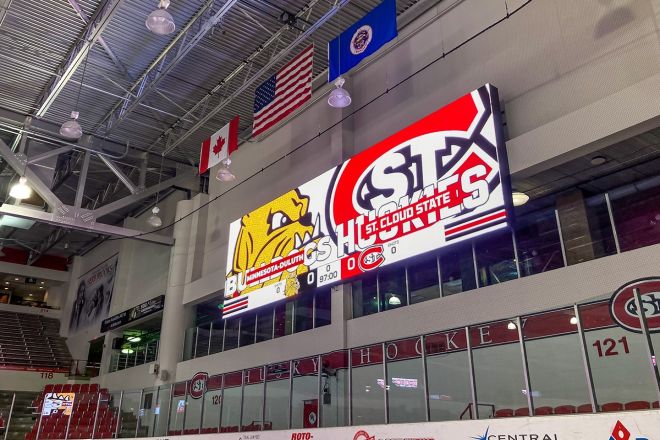
For sports organizations, tracking and measuring the effectiveness of LED advertising on score screens is a critical step in ensuring return on investment and continuously optimizing advertising strategies. Here are some suggestions for tracking and measuring the effectiveness of LED advertising:
- Set clear goals and targets:
Before starting an advertising campaign, sports organizations should clearly set the goals of the advertising, such as increasing brand awareness, boosting sales, increasing audience engagement, etc.
Based on the goals, develop corresponding measurement indicators, such as the number of ad exposures, audience interaction rate, brand search volume, sales growth, etc.
- Use data analysis tools:
Use data analysis tools to track and analyze the performance of ads on the LED score screen. These tools can provide key data on audience interaction, ad frequency, watch time, and more.
Combined with audience behavioral data, analyze how ads perform across different time periods, event types, or audience groups to gain deeper insights.
- Audience feedback survey:
Conduct audience feedback surveys to understand their opinions and reactions to LED advertising. Collect audience opinions through surveys, online comments, or face-to-face interviews.
Analyze audience feedback to understand the appeal of ads, the effectiveness of message delivery, and changes in audience perceptions of the brand.
- Comparative analysis and benchmark-setting:
Establish benchmark data and compare the changes in metrics before and after the advertising campaign to evaluate the effectiveness of the advertising.
Compared with other advertising channels or historical data, the advantages and limitations of LED advertising in attracting audiences and achieving goals should be analyzed.
- Conversion tracking:
If the campaign is designed to drive sales or lead viewers to a specific action (e.g., visit a website, download an app, etc.), make sure to set up effective conversion tracking.
Evaluate the actual performance of your ads by tracking your campaign’s contribution to conversions using unique promo codes, tracking links, or attribution models.
- Advertising effectiveness evaluation report:
Regularly organize and analyze the collected data to form an advertising effectiveness evaluation report.
The report should include trends in key indicators, audience feedback summaries, comparative analysis results, conversion tracking data, etc.
Share the report with advertisers to discuss optimization strategies and adjust advertising content and delivery strategies based on actual results.
4. What challenges and limitations do LED score screens in sports venues face in generating revenue?
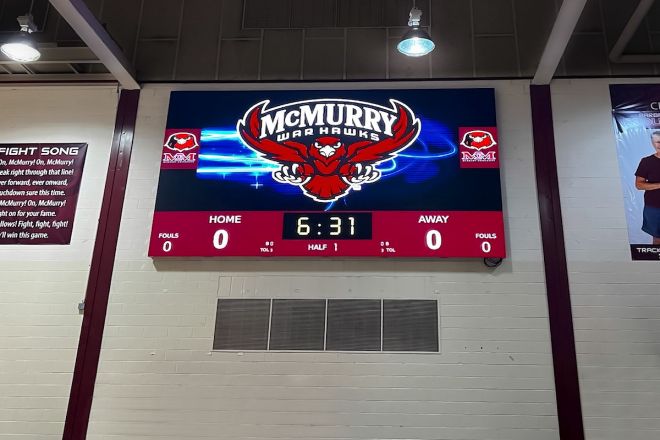
LED score screens in sports venues do face a series of challenges and limitations in the process of generating revenue. These challenges and limitations mainly come from aspects such as technology, operations, market competition, regulations, and policies. Below is a detailed analysis of these challenges and limitations:
1). Technical challenges:
- High cost and maintenance difficulty:
The initial investment cost of LED scoring screens is relatively high, including hardware equipment, installation fees, and possible software customization fees. In addition, long-term maintenance, updates, and upgrades also require a large investment of resources.
- Technology updates rapidly:
LED display technology continues to develop, and new products and technologies continue to emerge. Sports venues need to constantly follow up with technological updates to keep their LED score screens advanced and attractive, which increases the pressure on technology investment.
2). Operational challenges:
- Content update and management:
In order to attract audiences, the content of the LED score screen needs to be updated regularly to keep it fresh and interesting. This requires a professional team to be responsible for content planning, production, and updating, which increases operating costs.
- Audience participation:
Although LED scoring screens can improve audience experience, how to attract audiences to actively participate in interactions and increase their stickiness is a challenge that sports venues need to face.
3). Market competition:
- Competition in the advertising market is fierce:
As an advertising display platform, LED score screens face competition from other advertising media. Sports venues need to compete with other advertising channels for advertisers, which may lead to lower advertising costs and impact revenue.
- Event density and type:
The event density and type of sports venues have a great impact on the revenue-generating ability of LED score screens. Venues with fewer events or less diverse types of events will have limited exposure opportunities for their LED score screens, which may affect advertising revenue.
4). Regulations and policy restrictions:
- Advertising regulatory restrictions:
Countries and regions have strict regulatory restrictions on advertising content and forms. When sports venues use LED scoring screens for advertising, they need to comply with relevant laws and regulations, which may impose certain restrictions on the content and form of advertising.
- Venue usage regulations:
Some sports venues may be restricted by usage regulations or contract terms and cannot freely publish advertisements or conduct other commercial activities on the LED score screen.
5. What are the long-term economic benefits of investing in sports stadium LED score screens?
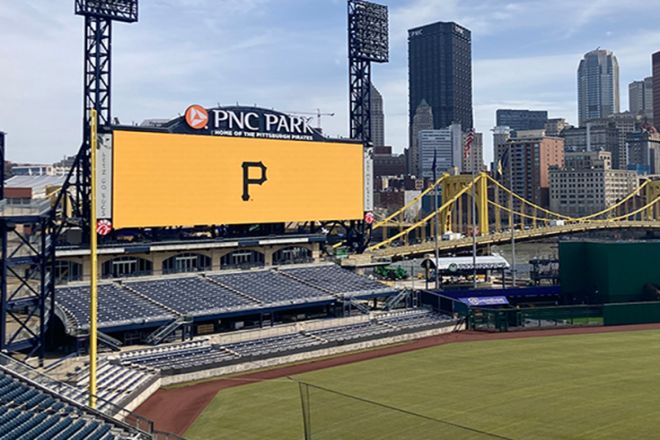
The long-term economic benefits of investing in sports stadium LED score screens are mainly reflected in the following aspects:
- Advertising revenue continues to grow:
As an advertising medium, LED score screens have a high degree of visual impact and audience appeal.
As the advertising market continues to expand and advertising demand increases, advertisers are willing to pay higher fees for advertising on LED score screens. Therefore, in the long-term operation, advertising revenue is expected to continue to grow, bringing stable returns to investors.
- Brand effect and awareness improvement:
Sports stadium LED score screens are not only an advertising display platform but also a powerful tool to enhance the venue’s brand effect and awareness. By displaying high-quality and creative advertising content, you can create a professional and fashionable image of the venue and attract more audiences and partners.
This improvement in brand effect will help increase the venue’s exposure and market share, thereby bringing more business opportunities and benefits.
- Enhanced audience experience and event attraction:
LED score screens can provide real-time and accurate game information, bringing a better viewing experience to the audience.
At the same time, its high-definition picture quality and stunning visual effects can also increase the attraction and viewing value of the event. This boost helps attract more spectators to games, increasing footfall and ticket revenue at venues.
- Diversified revenue sources:
In addition to advertising revenue, LED score screens can also bring other diversified revenue to venues. For example, by cooperating with other companies to host brand events or event sponsorships, you can obtain additional sponsorship fees and event income.
In addition, the LED score screen can also be used to display the venue’s publicity information, promotional activities, etc., to further enhance the venue’s visibility and commercial value.
Conclusion
In general, as a modern and efficient media platform, the LED score screen has huge revenue-generating potential.
By rationally utilizing advertising revenue, event sponsorship, partnerships, and value-added services, combined with strategies such as precise positioning, optimized display effects, and brand building, the commercial value of the LED score screen can be fully utilized, and considerable revenue generation effects can be achieved.
Finally, if you would like to know more about LED displays, please get in touch with us.
